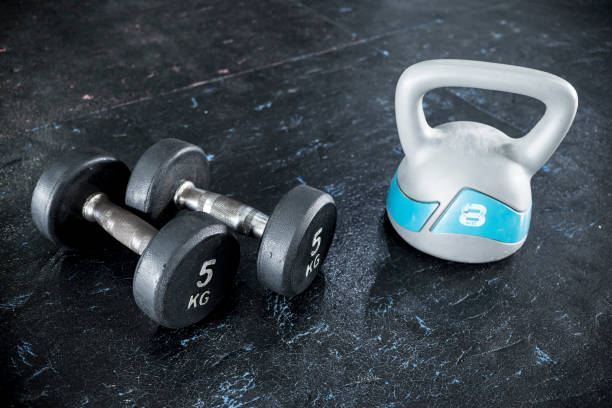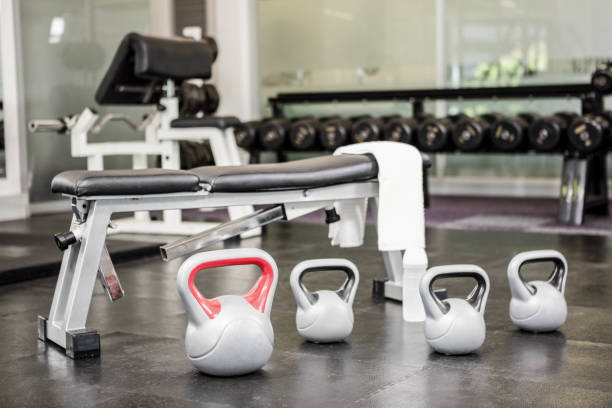It is much simpler to isolate these frequently and easily ignored muscles with the dumbbell rear delt fly, also known as the dumbbell rear delt raise.
The dumbbell rear delt fly also referred to as the dumbbell reverse fly, improves the strength and definition of the deltoid muscles. This exercise targets your rear (posterior) deltoids, though it also works other upper body muscles.
Your shoulder workout routine will be significantly improved by learning the dumbbell rear delt fly!
What is the Rear Delt Fly?
The rear delt fly also referred to as the rear delt raise or the bent-over dumbbell reverse fly, is a weight-training exercise that targets the upper back muscles and shoulder muscles, in particular the posterior deltoids, or rear deltoids, on the backs of your shoulders. For more difficult compound exercises like deadlifts, bench presses, and inverted rows, rear delt flies are a good isolation exercise to start with.
The triceps, rhomboids, infraspinatus, and other scapular muscles around your shoulder blades can all be worked out while performing this rear delt exercise with proper form. Rear delt fly variations can be performed with kettlebells, barbells, or flying machines as additional free weights.
How to Do the Rear Delt Fly?
Start with a weight that you can control for two to three sets of eight to twelve repetitions for the rear delt fly. Pick a weight that enables you to maintain the correct technique through all sets and repetitions.
1. Take two dumbbells, stand with your feet shoulder-width apart, and bend your knees just a little. With your head and neck in a neutral position, your shoulders should be directly over your hips. Throughout the movement, your chin should remain tucked, as if you were holding an egg there. Your feet should be bearing weight evenly across the entire surface of each foot. To establish a stable foot position, grip the ground with your feet.
2. Your hips should be hinged back while maintaining a neutral spine. The ideal position for your upper body is between a 30- and 45-degree angle with your shins vertical. Your legs ought to be actively supporting you as you stand. The palms of your hands should be facing each other as you hold out your long arms in front of you with a slight bend in your elbows.
3. To work your lats, turn your shoulders outward. The position of your shoulder blades should be neutral. Start each rep from this position.
4. Squeeze your posterior deltoids to begin the upward movement while keeping your elbows bent and your body in alignment.
5. Lift your arms up until your upper arm is parallel to your back. Your shoulder blades should retract as you lift the dumbbells. Your upper arms should be higher than your hands.
6. Take a one to two-second break at the top of the movement.
7. Once the dumbbells are back in the starting position, gradually lower your arms. You should feel your shoulder blades retract as you lower the dumbbells. Only lower the dumbbells as far as you can do so while keeping tension in your posterior deltoids.
How to Work Out Safely and Avoid Injury?
Before starting an exercise program, talk to your doctor if you have a history of health issues. For an exercise program to be safe and effective, proper exercise technique is crucial. However, depending on your personal needs, you might need to modify each exercise to get the best results. Always choose a weight that enables complete body control throughout the movement. Pay close attention to your body when exercising, and stop right away if you experience any pain or discomfort.
Include the right warm-ups, rest, and nutrition into your exercise program to see continuous improvement and increase body strength. In the end, how well you recover from your workouts will determine how well you perform. Before working out the same muscle groups again, rest for 24 to 48 hours to give your body enough time to recover.
Muscles Worked by the Dumbbell Rear Delt Fly
Primary Muscle Groups
Dumbbell rear delt flies target your rear delts primarily, as you might have guessed. The anterior, lateral, and posterior deltoids make up the deltoid’s three main fibers. This exercise puts the most strain on your posterior deltoids.
Secondary Muscle Groups
A good exercise for strengthening the trapezius is the rear delt fly with dumbbells. Additionally, this motion exercises the rhomboids and erector spinae in the upper back. During the dumbbell reverse fly, your core muscles also contract to keep your body stable.
Dumbbell Rear Delt Fly Benefits
Strength and Endurance
Your strength and endurance will go up after doing the rear delt raise. This strength move works multiple upper-body muscles simultaneously, unlike some other isolation exercises (moves that focus on just one muscle).
Araujo adds that since you do it while squatting, your quads and core are also worked.
Improved Posture
According to the National Academy of Sports Medicine (NASM), if you spend a lot of time hunched over your phone or computer, you probably have some posture problems, including a rounded upper back. The issue is made worse by having weak rear shoulder and upper back muscles.
According to Araujo, strengthening your lower back can aid in correcting muscle imbalances and enhancing posture. Additionally, that change in posture can ease headaches and shoulder pain.
A Healthy Body Composition
Your body’s levels of lean muscle mass can be increased by including more strength-training exercises in your weekly exercise program.
The Mayo Clinic claims that increasing your muscle mass can also aid in accelerating your metabolism—the rate at which your body burns calories.
Stronger Bones
According to the Mayo Clinic, lifting weights puts stress on your bones. Although it may seem harmful, this can actually increase bone density, lowering your risk of developing diseases like osteoporosis.

Dumbbell Rear Delt Fly Mistakes
Bringing Your Arms Backwards
Many weightlifters bring the dumbbells back in a diagonal motion toward their buttocks as opposed to raising their arms in a lateral motion. Rather than engaging your rear delts, this movement engages your back muscles.
Keep the dumbbells moving outward on a lateral plane to work your shoulders in order to correct this error.
Completing Partial Reps
It may be tempting to pick up a pair of heavy dumbbells when performing the dumbbell rear delt fly. The body’s strongest muscles are not the rear delts, though. If you lift too much weight, you’ll only be able to complete some reps.
Using too much weight reduces the exercise’s advantages and increases the chance of injury. To maximize your deltoid contraction on each rep, use lighter weight and complete all sets.
Bending Your Arms Too Much
While we do want to maintain a slight bend in our arms during the dumbbell rear delt fly, bending your arms too much will convert the exercise into a dumbbell row. We want to focus on the shoulders in this exercise, even though the upper back muscles will contract to stabilize the motion.
As a result, endeavor to maintain a relatively straight arm position throughout each rep.
The Bottom Line: An Effective Exercise
Targeting your deltoid muscles with a rear delt fly is good exercise. Although it engages many muscles in the upper body, it primarily focuses on the shoulder muscles. Incorporating upper body muscles not only enhances performance in the gym but also enhances the quality of life by simplifying routine daily motions.
Whether you want to change up your boring upper-body routine or are trying to become a bodybuilder, this exercise can be incorporated into anyone’s workout regimen.
Your dreams and goals will become a reality the moment you start using the rear delt fly or any of the variations you have learned about above.
